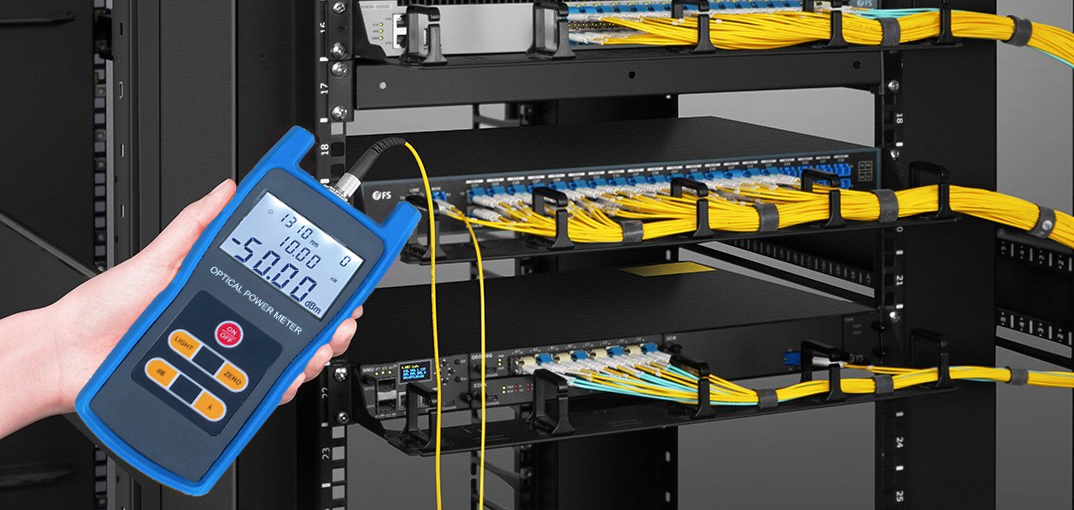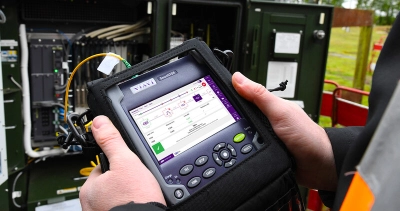Checking Out the Advantages of Optical Fibre Examining for Improved Communication Systems
The significance of optical fiber testing in modern interaction systems can not be overstated, as it works as a structure for ensuring network integrity and efficiency. Making use of advanced methods such as Optical Time-Domain Reflectometry (OTDR) and insertion loss evaluation, organizations can not just determine mistakes however also maximize their configurations. This aggressive testing strategy has profound effects for signal high quality and operational effectiveness, raising the concern of how these methods add to long-lasting sustainability in an ever-evolving technological landscape. Comprehending these dynamics is crucial for stakeholders intending to maintain an affordable side.
Value of Optical Fibre Screening
The importance of optical fiber testing can not be overemphasized in today's data-driven atmosphere. As companies increasingly rely upon high-speed information transmission for day-to-day operations, the integrity and efficiency of optical fiber networks are paramount. Checking ensures that these networks can support the vast amounts of data produced and sent flawlessly, cultivating efficient communication and connectivity.
Optical fiber screening offers multiple important functions, including verifying installation high quality, determining prospective faults, and figuring out general system performance. Routine testing can avoid expensive downtimes and service disruptions, allowing organizations to maintain operational connection. It helps in conformity with market requirements and policies, ensuring that fibre optic installations satisfy needed specifications for safety and integrity.
Furthermore, testing can boost the long life of fibre optic systems. By proactively identifying concerns such as signal loss, attenuation, or connector failings, organizations can address troubles before they rise, therefore extending the life of their framework. In summary, optical fiber testing is not merely a technological demand but a critical investment that boosts network dependability, optimizes efficiency, and ultimately sustains the growth and performance of modern communication systems.
Trick Testing Methods

OTDR is an important method made use of to identify faults, action splice losses, and assess the general honesty of a fiber optic link. By sending a pulse of light down the fibre and assessing the reflected light, service technicians can determine locations of faults and assess the network's efficiency over fars away.
Insertion loss screening measures the amount of signal loss that happens when light passes via a link or splice. This approach is vital for validating that links meet specific loss thresholds, which is essential for keeping ideal performance in communication systems.
Optical return loss testing quantifies the quantity of light showed back in the direction of the resource due to flaws in the fibre or links. High return loss worths indicate far better performance and lowered signal deterioration.
With each other, these screening methods offer a thorough analysis of fibre optic networks, ensuring their dependability and performance in varied interaction applications.
Influence On System Performance
Reliable optical fibre testing directly influences the overall performance of interaction systems. By guaranteeing the stability of fibre optic cable televisions, testing recognizes potential mistakes such as depletion, splice loss, and adapter misalignment. These issues can considerably deteriorate signal quality, causing disruptions and decreased information transmission rates.

Additionally, normal optical fibre testing adds to lasting system sustainability. It allows early discovery of deterioration, enabling timely upkeep and upgrades before major failings occur. This not just lengthens the life expectancy of the infrastructure yet likewise makes certain that communication systems stay affordable in terms of performance.
Cost-Effectiveness and Performance
Cost-effectiveness is a crucial factor to consider in the deployment and maintenance of optical try here fiber networks. Executing durable optical fibre testing treatments can significantly decrease operational prices by identifying problems prior to they escalate right into major troubles. fibre testing equipment. By detecting mistakes, depletion, and other performance barriers early, organizations can prevent expensive fixings and downtime, which can interfere with services and result in income loss
Additionally, effective testing methodologies simplify the setup process, allowing professionals to function better. This converts to reduce labour prices and faster job completion times. Advanced screening equipment, such as Optical Time Domain Name Reflectometers (OTDRs), allows an accurate analysis of fibre high quality, guaranteeing that just ideal materials are utilized, thereby decreasing waste.
Routine screening likewise adds to far better resource allocation. By recognizing the network's performance, companies can make enlightened choices regarding upgrades and growths, ensuring that investments are made where they are most required. In summary, optical fibre testing boosts cost-effectiveness and effectiveness, sustaining the lasting sustainability and competition of interaction systems in a significantly requiring market.
Ensuring Long-Term Dependability
Implementing extensive optical fiber testing not only boosts cost savings and functional performance but additionally plays a pivotal function in making sure the long-term reliability of interaction networks. Regular screening practices, including depletion and transmission capacity assessments, help determine possible destruction in fibre performance before it brings about solution interruptions.
By utilizing innovative testing methodologies, network operators can determine faults or weak points in the fibre facilities, permitting prompt remediation. This proactive method decreases downtime, making certain that communication systems continue to be functional and efficient. Additionally, routine testing contributes to the advancement of a much more like this durable network, as operators can adapt and optimize their framework based upon real-time data insights. optical fibre diameter analyser.
Furthermore, making certain conformity with industry criteria through optical fiber screening strengthens the high quality and integrity of the entire interaction system. This adherence not just boosts confidence among stakeholders yet likewise lines up optical fibre testing equipment with regulatory needs, which are significantly strict.
Conclusion
In final thought, optical fibre testing offers as a fundamental part in boosting communication systems. By utilizing different screening techniques, such as OTDR and insertion loss assessments, networks can accomplish optimum performance and dependability.
Comments on “Improve efficiency with modern robotic vision systems.”